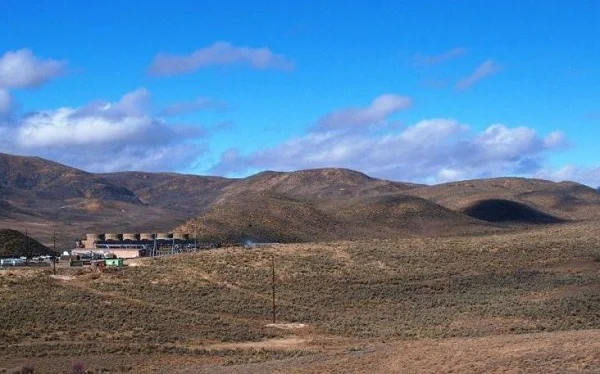Is geothermal energy destined to be a niche player as solar and wind gain big-time status in the United States? Leaders in the industry, meeting in Las Vegas this week, rejected the idea, but conceded they’ll have to do some educating, lobbying, innovating and cost-cutting if geothermal is to fully join the renewables revolution.
According to the most recent federal data [PDF], there are about 3.78 gigawatts of installed geothermal capacity in the United States. That’s the most in the world, but it’s a slender 0.32 percent of total U.S. generating capacity, and growth recently has been fairly modest. This despite the fact geothermal, with its ability to produce 24/7, has a key advantage over intermittent wind and solar.

Ormat’s Tuscarora plant in Nevada (image via Ormat Technologies)
“Wind and solar are available when they want to be and that’s not a great deal of the time,” Halley Dickey, director of geothermal business development at TAS Energy, said at a news conference during the first day of this week’s Geothermal Resource Council Annual Meeting & Geothermal Energy Association Energy Expoin Las Vegas. “Geothermal is available when you need it and when you call for it.”
Turning that advantage into more geothermal exploration and installation has been a challenge. The biggest hurdle: development costs. On that point, participants in the news conference agreed it costs too much to do exploratory geothermal wells, and not enough exploratory wells pan out.
Gradient Resources CEO Craig Mataczynski said the industry needs to work on both sides of that equation, driving down the cost of drilling, but also improving the drilling success rate. “Reduce the risk, and naturally your overall costs will come down, from 20 percent in today’s market to the 12 to 13 or 14 percent for the development phases for wind and solar,” he said.
Louis E. Capuano of Capuano Engineering said geothermal drilling was by its nature more difficult than the far-cheaper and more-common gas and oil drilling – geothermal busts through hard rock, he said, while gas and oil was like “going through a snow bank.” But Capuano added that the geothermal industry could learn a thing or two from its fossil fuel brethren, especially with the use of horizontal drilling techniques that might allow a wider area of exploration with fewer holes in the ground.
“The question is, if we’ve got a new technology, who’s willing to take the risk?” Capuano asked. We’ve got to get more projects out there so we can try the technology.”
Many believe that more support from Washington could help, but Karl Gawell, executive director of the Geothermal Energy Association, said there’s pretty good support now; the problem is that the backing began only fairly recently compared to wind and solar. ”Wind and solar have seen decades of support,” Gawell said. “We’re just a decade behind where the wind industry is today.”
Bob Sullivan, VP of business development for Ormat Technologies, said the industry would be aided if regulators more fully appreciated the value of geothermal. He called it a “great example of market failure” that the cost of steadily producing geothermal is compared directly to that of wind and solar, which have “hidden costs” due to their intermittent production. He pointed specifically to ramping costs and to transmission lines that aren’t used to their full capacity with the intermittent sources.
“These are some of the factors not being accounted for,” Sullivan said, but he felt confident that the California Public Utilities Commission, for one, would “correct for the integration costs,” leveling the playing field for geothermal.






